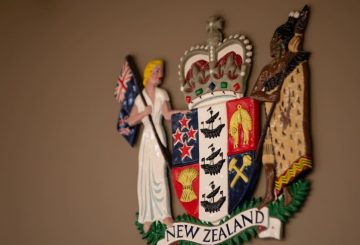根据国防部长朱迪思·柯林斯和外交部长温斯顿·彼得斯的联合声明,新西兰政府已决定将其在非洲和中东的国防军(NZDF)部署延长至2026年9月。这包括支持联合国在以色列和阿拉伯国家之间有争议的边界问题上所做的努力。
以色列和加沙之间的冲突升级,造成数千人死亡,加剧了边境的紧张局势,特别是与黎巴嫩的紧张局势。在苏丹,苏丹军队和准军事快速支援部队之间的战争导致了大规模的流离失所危机,一半的苏丹人口需要援助。
新西兰国防军的部署是新西兰促进和平与稳定以及维护基于规则的国际体系的承诺的一部分。彼得斯补充说,中东和非洲的挑战可能会产生更广泛的后果,包括对新西兰的安全的影响。
新西兰还将继续参与中东的海上任务,包括在巴林的联合海上部队(CMF),为期两年,直至2026年6月。这是为了确保航行自由和海上贸易通道的安全。
新西兰国防军还将领导第150联合特遣部队,该部队旨在打击印度洋和亚丁湾的走私、海盗和恐怖主义。澳新军团级护卫舰 HMNZS Te Kaha 和 HMNZS Te Mana 将支持这项任务。
此外,将在2025年5月至2026年6月期间向美国海军中央司令部部署一支地雷对策工作队,为期六个月。此次部署的目的是促进与合作伙伴的公海沟通渠道。
柯林斯说:“这些部署为新西兰国防军发展和测试对保护新西兰利益至关重要的技能和能力提供了重要机会。”


















































-360x245.jpg)










